БЕРЕЗЕНЬ ексклюзивний ніж ручної роботи майстра студії Павла Гончаренка, замовити купити в Україні (Сталь - К110 в ламінаті з нержавіючої сталі 95х18 через нікель)
- Виробник: Майстерня ножів ручної роботи Павла Гончаренка
- Модель: БЕРЕЗЕНЬ - студія ножів ручної роботи Павла Гончаренка, зам
| Загальна довжина клинка mm: | 273±05 мм |
| Матеріал леза | Клинок сталь - К110 в нержавіючій сталі 95х18 через нікель, австрійська високовуглецева к110 Bohler-Uddeholm AG в ламінаті із нержавіючого дамаску |
| Твердість клинка (метал): | Загартованість - 61 HRC |
| Матеріал руків'я: | Бронза, мельхеор, стабілізовані зуб мамонта і сувіль берези, мозаїчна темлячна трубка і пін. Темляк зі шкіряного шнура 3мм, бусина зі сувелю берези |
| Довжина леза | 140 ±05 мм |
- Наявність: Під замовлення
Опис
ТЕХНІЧНІ ХАРАКТЕРИСТИКИ:
Назва ножа - БЕРЕЗЕНЬ ексклюзивний ніж ручної роботи майстра студії Павла Гончаренка, замовити купити в Україні (Сталь - К110 в ламінаті з нержавіючої сталі 95х18 через нікель)
Тип ножа: Фіксований клинок
Бренд: Студія "Ножі ручної роботи Павла Гончаренка"
Сталевий лист: Ціліснолитий, на всю довжину ножа
Матеріал больстера (гарда) та тильника: Бронза
Матеріал руків'я: Бронза, мельхеор, стабілізовані зуб мамонта і сувіль берези, мозаїчна темлячна трубка і пін. Темляк зі шкіряного шнура 3мм, бусина зі сувелю берези
Колір руків'я: Коричневий
Просочення руків'я: Є
Покриття руків'я: Є
Отвір для шнурка (під темляк): Є
Темляк: Шкіряний шнур 3 мм, бусина зі сувелю берези
Піхви: Сувіль берези. Італійська натуральна теляча шкіра чепрак рослинного дублення, оброблена апретурою для захисту від води та просякнута захисними розчинами, прошита вощеною ниткою. На лицевій стороні - логотип майстра. Підвіс з'ємний, бусина зі сувелю берези.
Модель: БЕРЕЗЕНЬ ексклюзивний ніж ручної роботи майстра студії Павла Гончаренка, замовити купити в Україні (Сталь - К110 в ламінаті з нержавіючої сталі 95х18 через нікель)
Номер моделі: 087
Країна народження: Україна
Ремісник: Майстер Павло Гончаренко, м. Іванків, Україна Студія ножів ручної роботи Павла Гончаренка
Найкраще використання: Полювання, туризм, рибальство, домашнє господарство, поділ тушки, нарізка
Стан ножа: Новий
Ціна вказана разом з піхвами.
Ніж заточений, не є холодною зброєю.
Наші ножі дуже гострі, тому відкривайте та використовуйте їх дуже обережно. Ми не несемо відповідальності за будь-які травми, пов’язані з використанням наших ножів.
Наша продукція призначена для легального використання лише відповідальними покупцями. Ми не будемо продавати наші продукти особам молодше 18 років.
Наявність регулярно змінюється, після підтвердження вашого замовлення ми повідомимо вас про наявність або коли товар буде готовий. Товар може дещо відрізнятися від зображеного на фото.
Сталь к110 для ножів - особливості, плюси та мінуси
На даний момент існує безліч можливих матеріалів для виробництва ножів. Залежно від мети виготовлення, береться різний матеріал. Причому вміст основних речовин різних марках сталі може дуже істотно відрізнятися. Найбільш типовими марками сталі є високовуглецеві види сталі. Серед них можна знайти безліч видів матеріалів, що відрізняються між собою за кількістю додаткових елементів. Однією з найкращих марок сталі для мисливських ножів є К1100 від австрійської компанії Böhler.
Склад та особливості
Сталь Böhler К110 є високовуглецевим складом з високим вмістом хрому. Метал штампується методом холодного штампування. Виробляє метал один із найбільших металургійних концернів у світі. Заводи розташовані в Європі, Північній та Південній Америці.
При виробництві К110 використовується технологія електрошлакового переплавлення. За рахунок цього значно підвищується якість матеріалу. Через наявність різних небажаних домішок можуть з'явитися серйозні дефекти під час механічного кування. Щоб цього уникнути, використовується метод електрошлакової переплавки. При проходженні електрошлакової переплавки розплав до початку твердіння пропускаю через шар спеціального шлаку, за допомогою якого з розплавленого металу усуваються сторонні елементи, наприклад, фосфор, сірка і багато іншого.
Методика електрошлакової переплавки забезпечує підсумковий результат низькими рівнями сегрегації, чистотою та однорідністю структури. У Böhler К110 істотно знижений відсоток шкідливих домішок та з'єднання металів та неметалів з вуглецем поширені рівномірно.
Тому такий метал відрізняється складним складом і здатна витримувати навіть дуже тонкі кути при куванні. Однією з основних переваг є вкрай висока міцність та в'язкість. Гартувати такий матеріал бажано на повітрі. За потреби застосовується методика азотування. Böhler К100 використовується для кування ножової продукції середнього та високого цінового сегмента.
Склад металу:
У ньому міститься 1,5% вуглецю, який забезпечує більш високу міцність та твердість.
Вміст хрому – 12%. Цей метал забезпечує підвищену здатність сталі гартуватися, стійкість до іржавіння та зношування.
Молібден 0,8% застосовується для виготовлення швидкорізальної сталі. Він значно підвищує жорсткість клинка, робить його стійким до високих температур.
Відсоткова частка ванадію – 1%. Цей хімічний елемент має високу міцність. Підсилює характеристики пружності матеріалу та робить його несприйнятливим до різних агресивних середовищ.
Марганець – 0,35%. Марганець використовується під час виплавки. Він значно підвищує твердість матеріалу. Характерною особливістю марганцю є те, що із сталі з високим вмістом хімічного елемента виготовляють різні предмети, що вимагають високої міцності. Наприклад, сейфи, рейки та багато іншого.
Böhler К110
Основні переваги
Будь-яка сталь є сплавом заліза і вуглецю, проте їх співвідношення в речовині буде безпосередньо впливати на характеристики готового виробу. Цей вид матеріалу виготовляють шляхом електрошлакового переплавлення. А за рахунок великого вмісту домішок утворюється підвищена міцність матеріалу.
До основних переваг стали К110 від Böhler можна віднести:
- Головною вимогою, яка стосується всіх ножів це гострота заточування. Однак, чим гостріше заточити ніж, тим швидше він тупитиметься. Однак до ножів з К110 це правило не застосовується. Через високу концентрацію хрому в цій сталі істотно підвищується стійкість до зносу. Тому ріжуча кромка завжди буде гострою. Однак використання таких домішок знижує стійкість до корозії. Хоча ніж і не буде дуже швидко іржавіти.
- Наявність високого відсотка молібдену у складі забезпечує матеріал рівномірністю та гомогенністю сталі. Це дуже важливо для ножа. Невелика частка ванадію підвищує міцність та довговічність матеріалу, а марганець у контакті з хромом суттєво підвищують міцність.
- Після безлічі випробувань було встановлено, що навіть після безлічі обробок кісток та розтину консервних банок на лезі практично не з'являється засічок. Лезо продовжує бути здатним нарізати газету під власною вагою.
- За рахунок поєднання різних домішок у складі речовини та методу виготовлення сталі ножі з цього матеріалу відрізняються вкрай тривалим терміном експлуатації.
- Підвищена стійкість леза до різних агресивних середовищ, до яких належать деякі внутрішні органи тварин. Тому ніж не буде тривалий час темніти і іржавіти.
Основні недоліки
До мінусів можна віднести:
- Така не відрізняється високою міцністю на злам. Тому, небажано метати вироби, перевіряти на здатність згинатися.
- Клинки з подібного матеріалу зазвичай виготовляються з невеликим розміром та вузькою спрямованістю. Це мисливські ножі, спеціально підготовлені для обробки туш. Зазвичай вони використовуються жителями Сибіру та Півночі. Однак, свої відмінні властивості меч буде здатний показати виключно при грамотній підготовці та заточуванні. В іншому випадку дуже легко зіпсувати ріжучу кромку. Однак, якщо такий догляд буде забезпечений, ножі з К110 дорівнюватимуть за характеристиками лезам з якіснішої сталі.
Висновок
К110 від Böhler від австрійського виробника – один із найякісніших видів продукції для кування ножів. Незважаючи на вимогливість до догляду за клинком та обов'язкову умову ретельно висушити після контакту з водою, ніж із такого металу слугуватиме у правильних руках дуже довго. Тому купувати ножі та інструменти з К110 від австрійського виробника однозначно варто. Вони здатні прослужити тривалий термін.
МАТЕРІАЛ РУКІВ'Я ЗУБ МАМОНТА
Зуб мамонта.
Зуб мамонта – виробний матеріал тваринного походження. Його винятковою особливістю є той факт, що його джерелом є вимерлі звірі – мамонти. Палеонтологами було встановлено, що вони жили на Землі близько 10 тисячоліть тому, і їхня кількість була дуже велика. Зуби у мамонтів були не постійними і змінювалися приблизно чотири рази протягом життя. Зуби, що випали, які сучасні вчені знаходять під час розкопок, і стають основою для декоративних елементів, серед яких є і рукояті ножів.
Через тривале перебування в грунті матеріал набув дуже нестабільної структури – емаль отримала кам'яну твердість, а дентин, навпаки, став пухким. Але сучасні технології стабілізації матеріалів допомогли перетворити зуби мамонта на чудову основу для створення розкішних рукояток ножів. Полімерний композит забезпечує виробам стійкість до корозії та вологи, а природна основа дає унікальну текстуру та вигадливий візерунок.
Що таке березовий сувель і як його заготовляють?
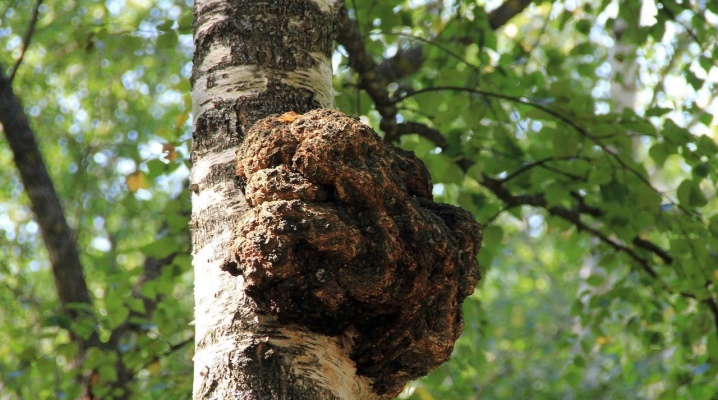
Сувель берези – незвичайна природна освіта, яку в народі часто називають березовою кісткою. Ті майстри, що профілюються на обробці дерева, знають ціну цьому незвичайному наросту. Працюючи з сувелем, можна зробити найкрасивіші вироби з приємними та якісними природними характеристиками.
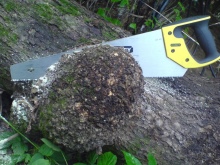
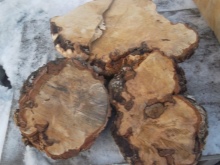
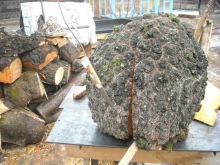
Що це таке?
Сувель - це ресурсний для людини наріст, але для самої берези він не означає нічого хорошого. З'являється цей наріст через хворобу дерева (якщо говорити образно, через березовий рак). Зазвичай це грудка, скручена і сплетена, не має чіткої геометричної форми. Інша народна назва наросту – свіль. І росте цей свіль у 2, а то й у 3 рази швидше за саме дерево.
За формою він нагадує чи краплю, чи кулю, чи щось усереднене. Наріст розташовується навколо гілки або стовбура. На березі такі утворення зустрічаються часто, хоча точно сказати, чим вони викликані і чому розвиваються, не можна. Вважається, що з'являється сувель внаслідок атаки дерева грибком. Але й механічну травму берези виключати не можна.
А ось деревною кісткою цей наріст називається тому, що зріз сувеля нагадує розлучення мармуру, з властивим матеріалу перерізом і променями, а тонкі частинки сувелю навіть можна переглянути наскрізь. Якась подібність із будовою кісткової тканини, дійсно, вгадується. Щоправда, щільності тканини у наросту все-таки менше – ця деревина не така міцна, як, наприклад, кап.
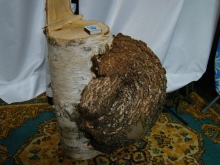
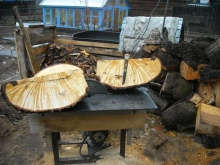
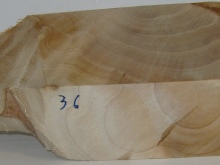
Трапляється, що сувель розростається до великих розмірів. Якщо приїхати до Ватикану, можна побачити там купіль, яка зроблена з цілісного шматка зрізаного з дерева сувеля. Щоправда, гігантський розмір не дорівнює якості матеріалу. Зазвичай, що менше березова кістка, то яскравіший і насиченіший внутрішній малюнок. Але в будь-якому випадку внутрішній візерунок наросту м'який, без щипчиків та голочок.
Усередині сувель нагадує перламутр – відтінком, звісно. Він буває різним, може бути білішим, темнішим, насиченим або бляклішим. Іноді сувель усередині як бурштин, буває більш коричневим, рожевим або навіть зеленуватим. Те, яким буде відтінок нутро наросту, залежить від того, де росте береза, а також від подальшого сушіння цієї частини дерева.
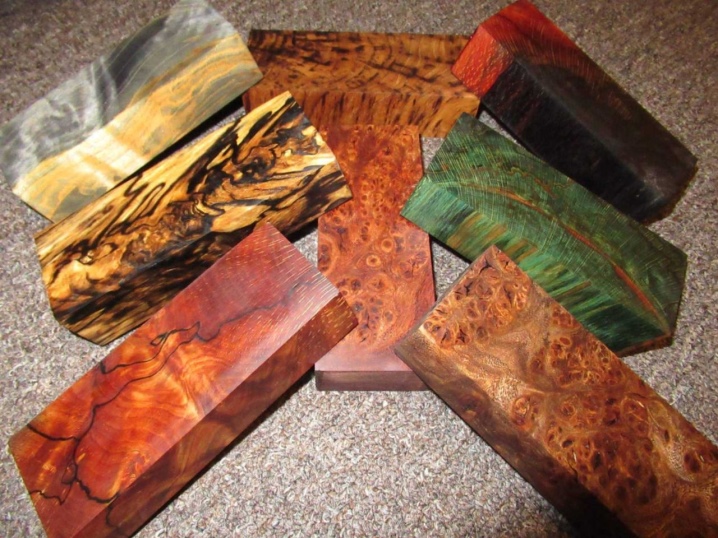
До речі, сувель можна спровокувати. Деякі люди просто перетягують березовий ствол або конкретну гілку дерева дротом. На місці перетяжки утворюється опуклість, що створюється річними кільцями. Але якщо дбайливе ставлення до природи у пріоритеті, робити так не варто.
Сувель ще тим вигідна природна освіта, що добре поводиться при обробці. Наріст чудово піддається шліфуванні, чудово полірується. Нарешті, головною цінністю освіти є той самий перламутровий зріз, що нагадує мармур. Він грає розлученнями на сонці, зачаровує своєю текстурою і навіть народжує якесь внутрішнє світло. Не можна точно сказати, дивлячись на наріст на березі, який він усередині, але певні прогнози можна зробити.
Чим корящий і крутіший наріст, тим його внутрішній малюнок багатший і цікавіший.
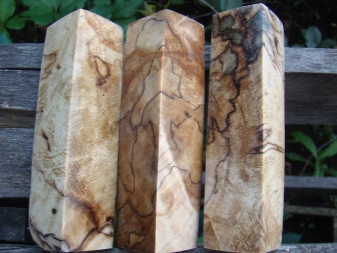
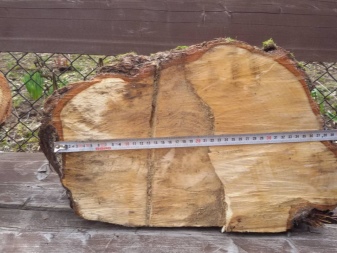
Чим відрізняється від капа?
Спочатку варто сказати, що таке кап. Він також має альтернативну народну назву – «відьмін віник». Ця освіта, на відміну сувеля, має доброякісну природу. На березовому стовбурі або гілочці виростають вузлики. Це не якась куля або велика крапля, а вузликова освіта, з безліччю шишечок, які створюють сплячі нирки (або придаткові). Ці освіти нагадують чи то шипи, чи горбки. Не дивно, якщо на капі, прямо з його нутра, зростатимуть дрібні пагони та невеликі гілочки. Зі свилем це виключено.
Відмінності між цими утвореннями є суттєвими.
Наприклад, кап - рідкісна та вдала знахідка. Вважається, що виявити його можна на одному із 3-5 тисяч дерев. Сувель знайти простіше. На березах частіше люди знаходять прикореневий кап, і він також може бути вражаючих розмірів. Обробляти кап не так просто, як сувель, все ж таки горбки, шишечки і шипи даються взнаки. Але зі шліфуванням і поліруванням проблем виникнути не повинно.

Деревина у сувеля не така міцна, як у капа. Вона міцніша щонайменше вдвічі, ніж у тієї берези, на якій кап виріс. З капа частіше роблять портсигари та скриньки, сережки, браслети, шпильки, дрібний декор. А ось різьблений візерунок на капі не створюють ніколи (ну, можливо, тільки запеклі експериментатори), адже він буде зайвим.
Фактура і текстура цього рідкісного деревного елемента не потребують надмірного декору.
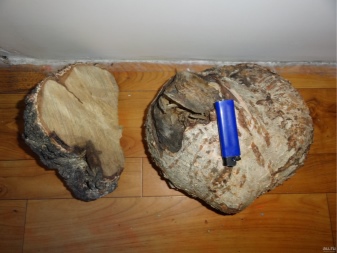
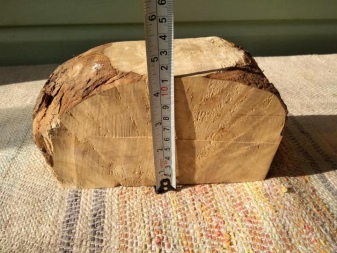
Особливості заготівлі
Шукати незвичайну опуклість треба, звісно ж, у лісі. І кап, і свіль, до речі, дуже часто плутають із деревним грибом. Його назву навіть запам'ятати складно – Інонотус скошений. Але якщо говорити простіше, це те, що люди називають чайкою.
Такий гриб росте на березі, і його зустріти на дереві можна частіше, ніж сувель і тим паче кап.
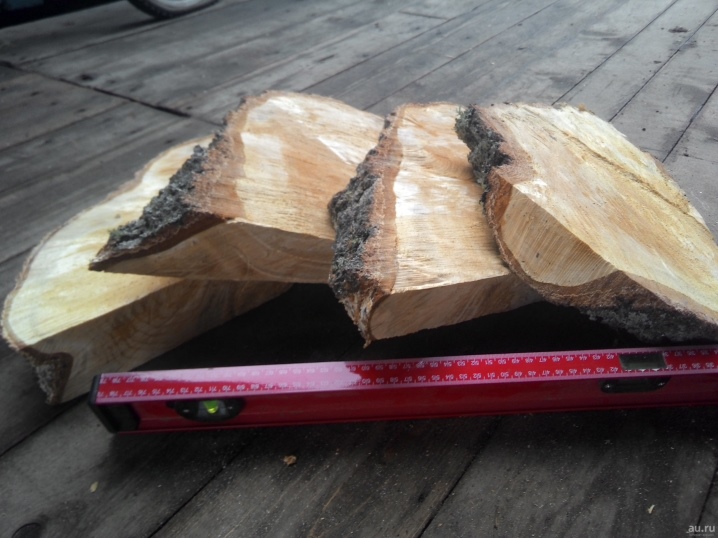
Ось кілька порад щодо пошуку та заготівлі свиля.
- Спилювання свилю оптимально восени (як і капа, втім). Якщо вони дуже коряві, осіння заготівля особливо доречна.
- Спилювати наріст непросто – можливо, доведеться залучити для цього бензопилу. Щоправда, і тут може виникнути проблема – ланцюги пили швидко тупляться під дією впертого, дуже міцного наросту.
- За відсутності бензопили підійде і ручний інструмент, але тільки той, зуби якого гострі. Якщо пила буде тупувата, важко доведеться і майстру, і дереву, якого такі маніпуляції небезпечно ранять.
- Щоб на дереві не утворилося ненароком непотрібне дупло, місця зрізу сувеля потрібно швидше замазати садовим варом. Замість вару пригодиться і глина, і замазка олійною фарбою.
- Якщо знайдено звільнення величезних розмірів, варто серйозно подумати, чи спилювати освіту. Якщо відібрати у дерева такий наріст, можна завдати йому сильної шкоди: рана буде настільки серйозною, що дерево ризикує загинути.
- Початкова обробка варіативна. Можна залишити деревину на повітрі в самих натуральних умовах, але на природне сушіння піде рік, а то й два. Можна прискорити процес так: кора знімається із заготівлі, обертається газетою, поміщається у чорний пакет із поліетилену. Папір не дасть матеріалу поспішити з нагріванням, а пакет створить парниковий ефект. Якщо сувель сушиться надворі, чорний поліетилен швидко нагріється від сонця, якщо вдома – від батареї. Процес рівномірний, а отже, можна не перейматися розтріскуванням дерева. Пакет зав'язується із залишенням невеликої віддушини. На все піде приблизно 25 днів.
Але збирання, сушіння – це ще тільки початок процесу. Далі сувель треба варити.
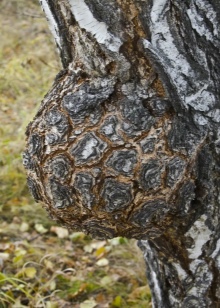
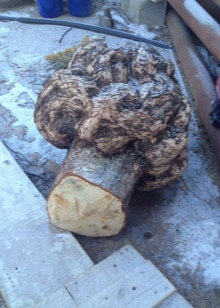
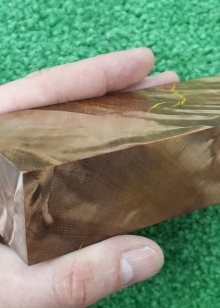
Секрети обробки
Нижчеописаний спосіб варіння досить популярний. Більше того, він годиться, і щоб надати деревині бажаного відтінку, і щоб форсувати сушку, і щоб зробити більш виразним натуральний малюнок.
Варіння сувелі виготовляється за певною схемою.
- У каструлю укладаються лише очищені від кори заготовки. Водою вони заливаються те щоб рідина на 3 див покривала матеріал. Потім до 1 л води додають 2 столові ложки солі, ємність ставиться на вогонь. У розчин вносять тирсу: підійдуть вільхові або березові, хвоя теж пригодиться. Вони потрібні як натуральний барвник.
- Як тільки вода закипіла, вогонь зменшують і варіння триває 4 години. Якщо доводиться обробляти дуже велику заготівлю – усі 6 годин. Після чого воду зливають, деревину залишають підсихати. На другий та третій день процеси повторюються. Сумарно варіння повинне займати не менше 12 годин (до 18) протягом трьох діб поспіль.
Чому варити треба саме у сольовому розчині – спрацьовує проста фізика. У дереві є сік, і його щільність нижче за щільність сольового розчину. При варінні вода потрапляє у матеріал, починається зневоднення. Дерев'яний сік витісняється, вбирається сольовий розчин. Так відбувається елементарна дифузія рідини, і наріст висушується.
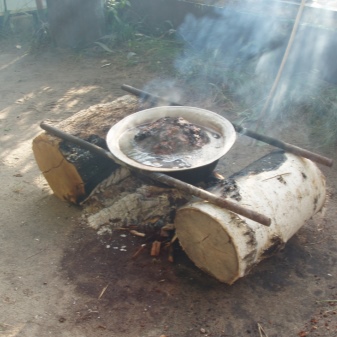
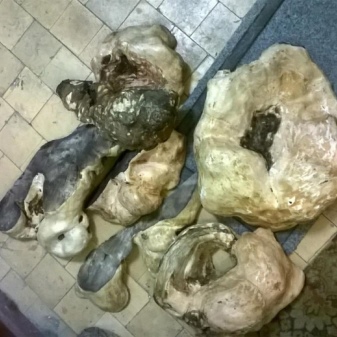
Після варіння матеріал треба обернути газетою та відправити у пакет. Наступного дня свіль все ще волога, може досихати без зайвих заходів. У крайньому випадку, підсушити матеріал можна ще один день у газеті.
Обробка наросту буває чорнової та чистової. При чорновому робиться спил у матеріалі такий, який завгодний майбутній формі виробу. Якщо це, наприклад, чаша, внутрішня частина вибирається зверху донизу. Зайва деревина видаляється рухом від стін до центру з дотриманням кута 45 градусів. Допоможе в цьому дриль чи стамеска. Витончати стінки особливо не потрібно: при висиханні вони можуть виявитися занадто крихкими, навіть розтріскування не виключені. Коли виробу надано первісну форму, його залишають на пару днів на відкритому повітрі не під прямим сонячним промінням.
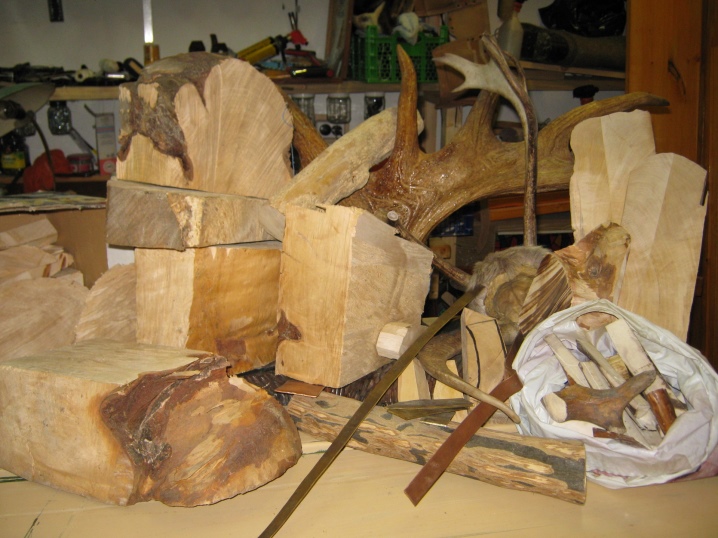
Чистове оздоблення – це видалення незграбності форм, максимальне просування до кінцевого виду виробу, розкриття структури березової кістки.
Якщо в ході цієї роботи виявляються недоліки матеріалу, невеликі тріщини, виручить суміш клею та тирси. Після цього можна зачищати шорсткості: рашпілем або скребком, дротяна щітка теж працює. Діяти треба часто та дрібно, акуратно. Відшліфувати виріб можна дрилем, а краще вручну – шкіркою.
Залишиться лише очистити від пилу готовий виріб, протонувати, якщо такий задум. Дерев'яний наріст іноді обробляють лаком, іноді воском, використовується і гаряча оліфа. І цей процес довгий, трудовитрати суттєві. Але ж і коштують вироби із сувелю чимало.
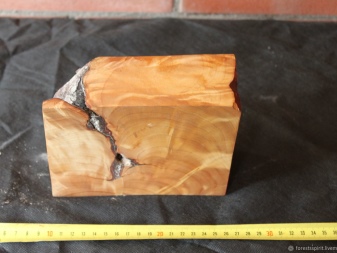
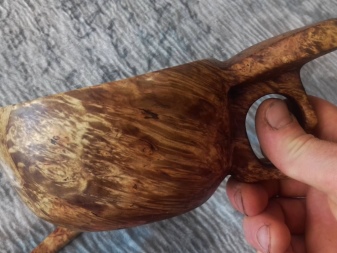
Застосування
Вироби з березової кістки різноманітні – чого не створить фантазія автора. Найбільш ходовими вважаються прикраси: оригінальна біжутерія, яка сьогодні, в епоху екостилю, бохо-напрямок у дизайні особливо затребувана. Такі прикраси підійдуть тим, хто любить натуральні матеріали, природні кольори – бежевий, молочний, зелений, пісочний.
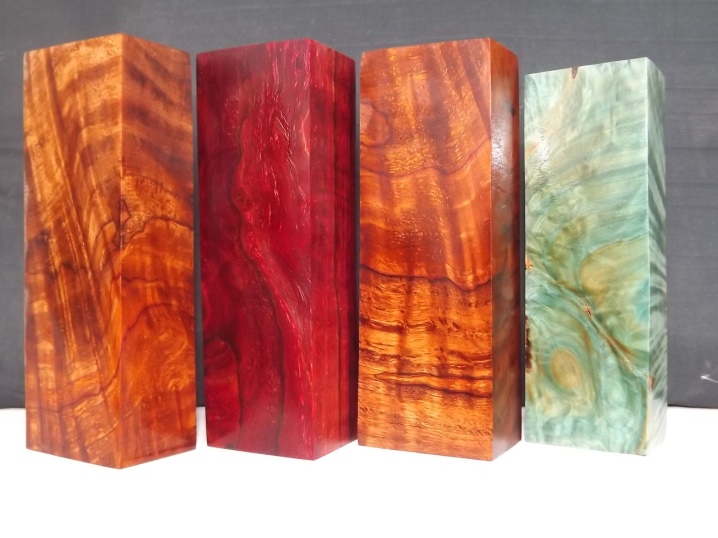
Роблять із березової кістки та дуже гарний посуд. Найпопулярнішим найменуванням сьогодні, напевно, можна вважати обробні дошки. Але й рукоятки ножів, звісно, конкурують із дошками – і це вже традиція. Матеріал щільний, простий у обробці, дуже гарний, тому рукоятки ножів будуть явно затребувані. Ножі є роками, навіть десятиліттями. Ремонт на кухні може змінитися, чимала частина посуду теж, тому ножі потрібні добротні та красиві, поза часом і мінливою модою. І рукоятки з березової кістки якнайкраще підходять.
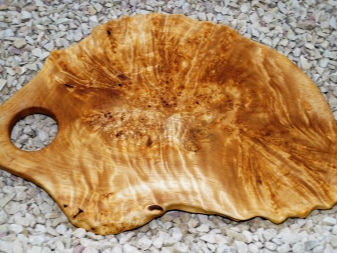
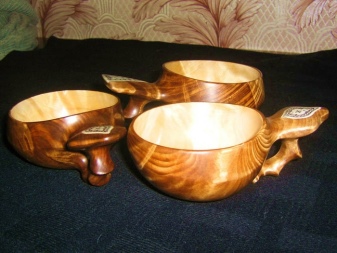
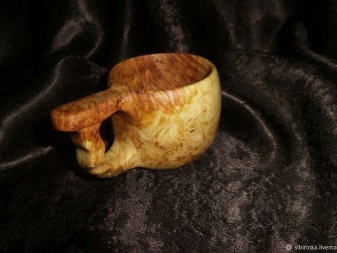
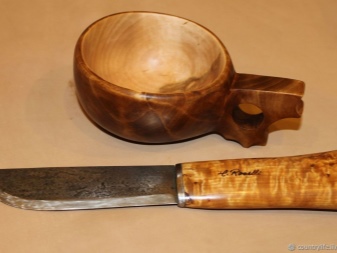
Фігурки птахів та тварин теж дозволяє зробити сувель, адже дерев'яний візерунок так чудово візуально повторює оперення птахів, шкіру змії або шерстку тварин. Вигини матеріалу самі надихають автора, підказують майстру, що саме йому зробити. Дерев'яний малюнок може бути не самостійним виробом, а частиною оформлення картини, панно, іншого художнього об'єкта.
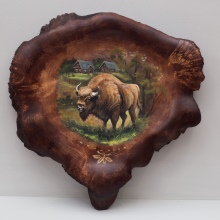
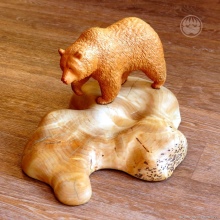
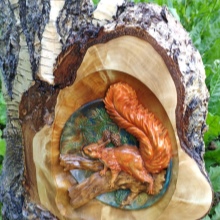
Словом, у того, хто любить возитися з деревом, знає ціну дерев'яному декору, виникне 100 і 1 ідея щодо березового наросту під назвою сувель. І можна бути впевненим, що прослужить виріб із березової кістки довгі роки.
ЩО ТАКЕ MICARTA І G10, І НІЖ ЦІ КОМПОЗИТНІ МАТЕРІАЛИ МІЖ СЕБЕ ВІДМІНЮЮТЬСЯ
Вже десятки років композитні матеріали Micarta та G10 є безперечними лідерами у ножовій індустрії, зокрема для виробництва рукояток різної складності. Матеріали виділяються своєю доступністю, легкістю виробництва та обробки, а також високою міцністю, зносостійкістю та невибагливістю в обслуговуванні. Обидва матеріали є композитними, в їх основі лежить полімерна смола, яка доповнюється шарами полоненої тканини різного типу.
Micarta-G10-Сomposite-materials-photo-2
Матеріал Micarta - це електроізоляційний матеріал, що складається з полімерної плівки (на основі крезолоальдегідної, фенолоальдегідної, ксиленолоальдегідної смоли, або смоли із суміші фенольної сировини). Він склеєний за допомогою різних електроізоляційних паперів, тканини (в основному льону натурального або штучного походження), або інших матеріалів схожої структури, також зустрічаються варіанти зі скловолокна та вуглецевого волокна. Колір матеріалу залежить від смоли та тканинної основи, що використовується при склейці. Micarta відносно м'який матеріал і потребує ретельної ручної обробки. Тому її застосовують у виробництві рукояток для дорожчих ножів.
Мікарту зареєстровано як товарний знак американської компанії Industrial Laminates / Norplex, Inc. (Norplex-Micarta). Її вітчизняним аналогом можна розглядати матеріал під назвою "Гетінакс", який переважно використовується як основа для друкованих плат. Матеріал також має листкову пресовану структуру, яка складається з паперової основі з додаванням просочення з фенолоальдегідної або епоксидної смоли.
Мікарта на лляній основі має більш привабливий оптичний ефект під час шліфування волокон. Після завершення шліфування поверхню можна полірувати або піскоструминну обробку. У першому варіанті, поверхня матеріалу вийде гладкою, шовковистою, теплою і приємною на дотик. А в другому, матеріал стає шорстким і має матовий відтінок, крім того, надійно тримається в руці, не ковзає.
Основні характеристики Micarta:
- підвищена водостійкість;
- відмінна витримка температурних перепадів;
- міцність до механічної обробки;
- щільна структура, яка не поглинає запахи;
- мікрорельєф матеріалу не ковзає в руці навіть за умов вологої поверхні;
- щільне прилягання до леза, яке зовсім не залишає проміжків і не дає залишкам продуктів і шкідливим мікроорганізмам накопичуватися.
Матеріал G10 - це легкий, твердий і досить жорсткий композитний матеріал з текстурованою поверхнею, який переважно використовується при виготовленні рукояток як складних ножів кишенькових, так і ножів з фіксованим клинком. Даний матеріал створюється шляхом укладання декількох шарів скловолокна, ретельно просочених епоксидною смолою, у спеціальний вакуумний прес, де, під впливом стиснення та тепла, смола остаточно твердне, зберігаючи структуру склотканини.
Для матеріалу G10 характерна хороша стійкість до ударів, зносостійкість, вологостійкість, а також простота в обробці та обслуговуванні. Матеріал можна пофарбувати у різні кольори, у тому числі шарами. Поверхня G10 також може полірувати до глянсового стану, або мати шорстку протиковзну структуру, під впливом шліфувального верстата, або піскоструминної обробки.
Ключові особливості G10:
- висока стабільність базових властивостей при коливаннях температури;
- витримує високі ударні навантаження, навантаження на стиск та розтяг;
- висока загальна гідрофобність та стійкість до впливу хімікатів;
- відносно мало важить, по відношенню до загальної міцності та щільності;
- низька електропровідність;
- може набувати різних форм.
Композитні матеріали G10 та Micarta мають практично аналогічний склад та зовнішню схожість. У той же час, матеріал G10 має більш високу вогнетривкість, хоча і не є негорючим матеріалом, має більш високу міцність на стиск, вигин, удар і розрив, а також більш простий і бюджетний у виробництві. При цьому G10 поступається в плані "чіпкості" у вологих умовах, а також, тактильно, відчувається менш "натуральною".
Рекомендовані товари

Доставка і оплата
Доставка і оплата
Доставка Новою Поштою
Швидкість доставки в будь-яке відділення Нової пошти в Україні фіксується оператором, але зазвичай не перевищує 1-3 календарних днів.
Готівкою
Оплата готівкою при отриманні товару.
Післяплатою на Новій Пошті (при собі необхідно мати паспорт або водійське посвідчення).
Visa и MasterCard
Оплата замовлення на карту Приват Банку.
Доставка товару можлива тільки після підтвердження платежу.
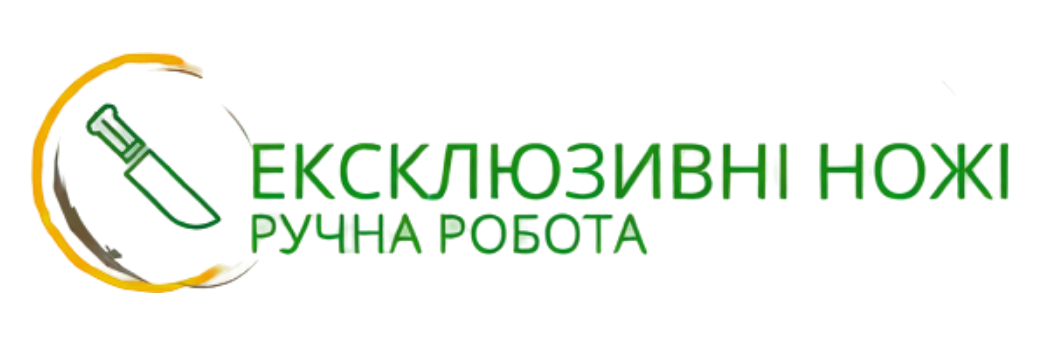





















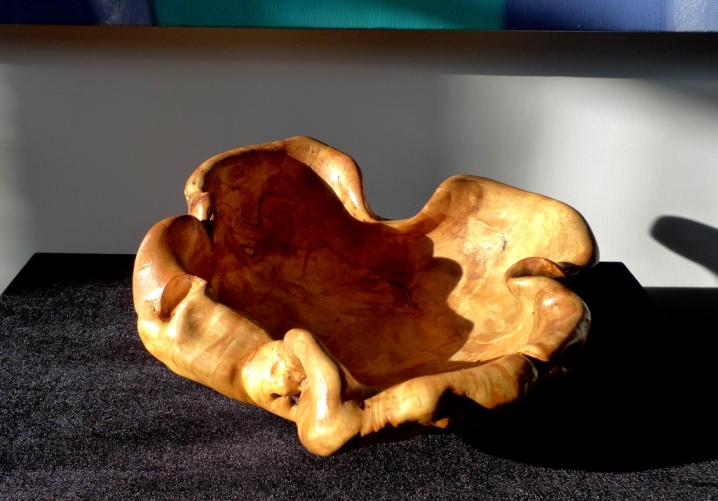

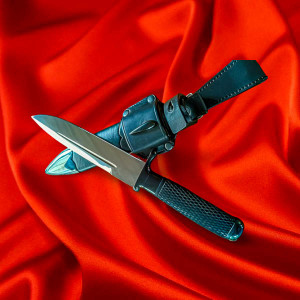
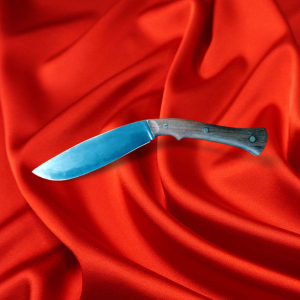
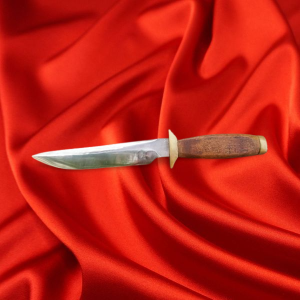
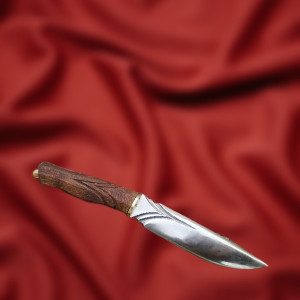
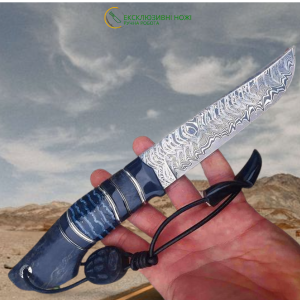
-300x300.png)
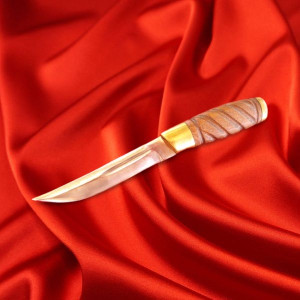
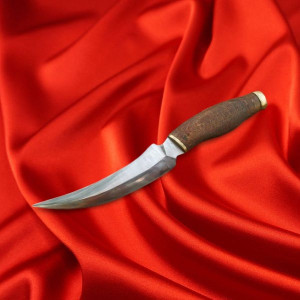
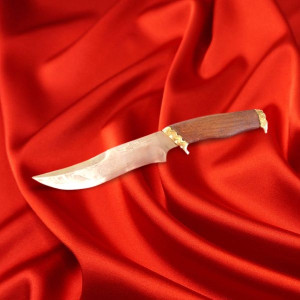
 мисливський ніж/ПЕРО_2 мисливський ніж111-300x300.jpg)
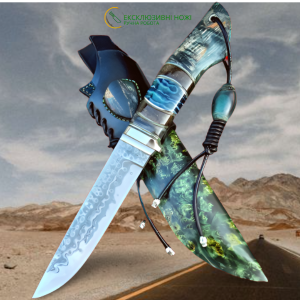
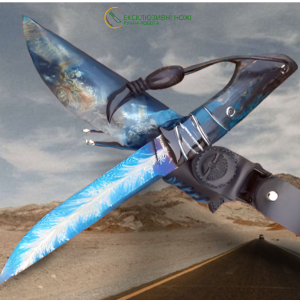
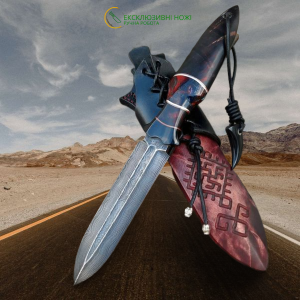
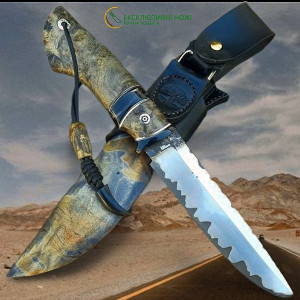
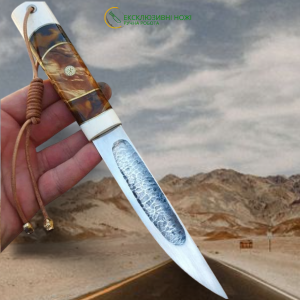
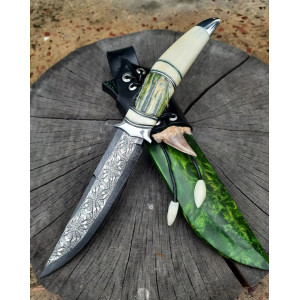
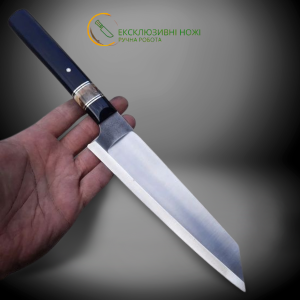

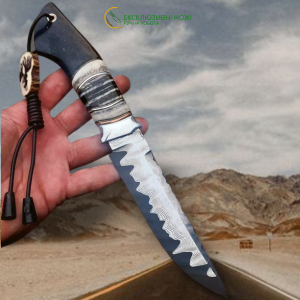
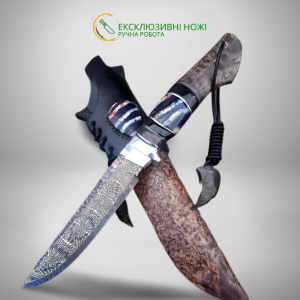
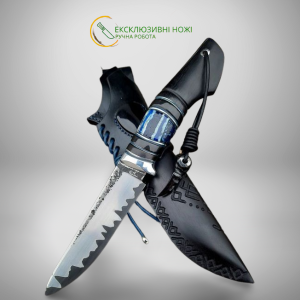
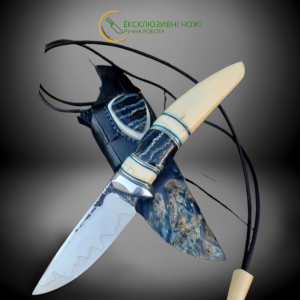
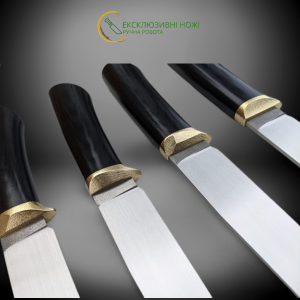
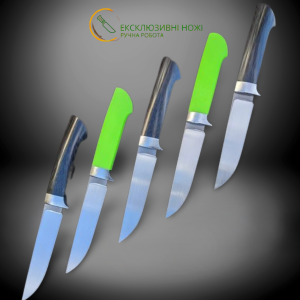
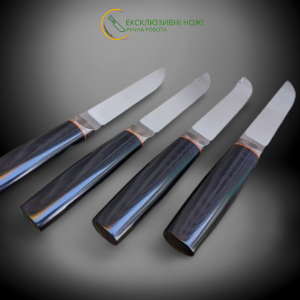
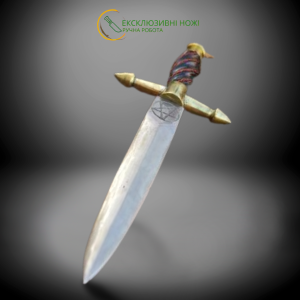
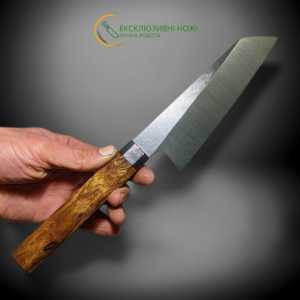

/КЛОНДАЙК (шукач скарбів) н6іж ручної роботи майстра студії ножів Павла Гончаренка-300x300.png)
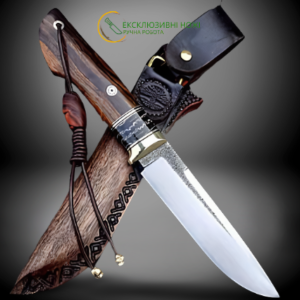
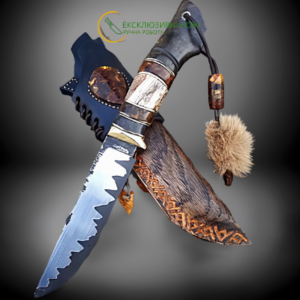
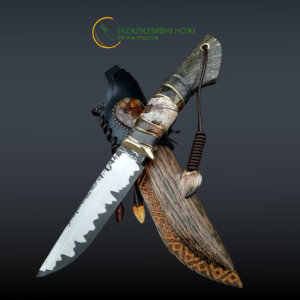
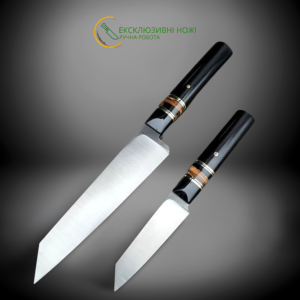
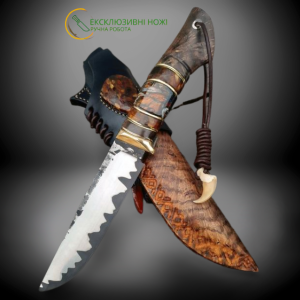
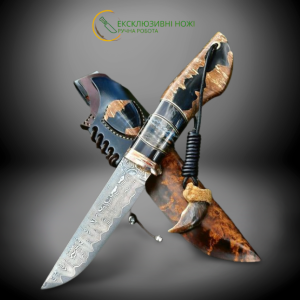
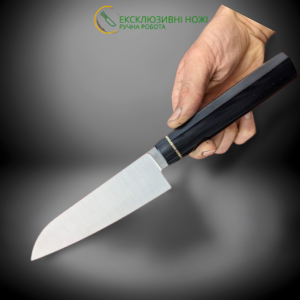
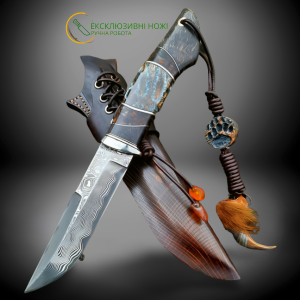






-300x300.png)
 — середнє 2-300x300.jpg)






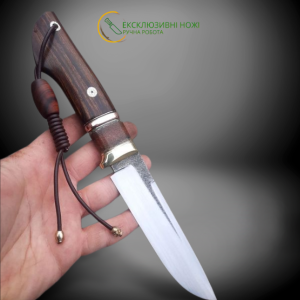






































































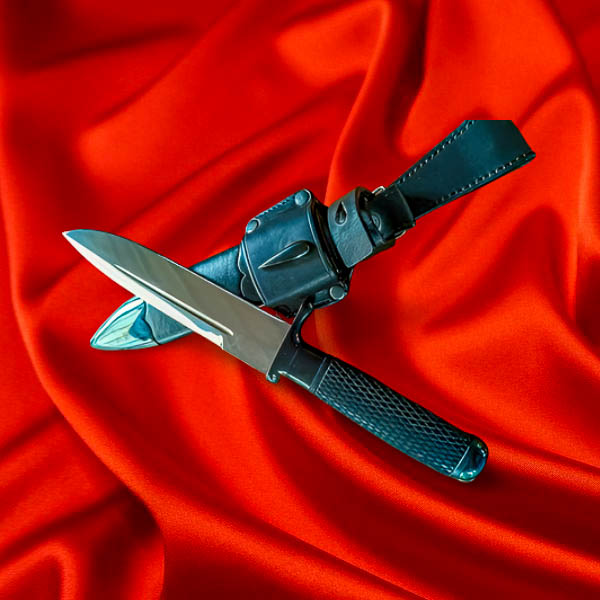


-600x600.png)
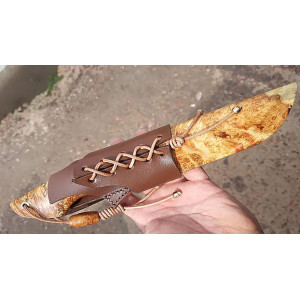
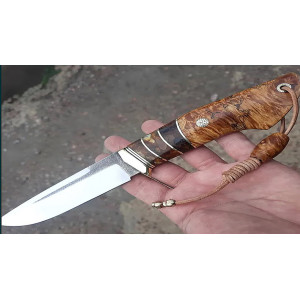






_заст-600x600.png)
9-300x300.jpg)
6-300x300.jpg)


























